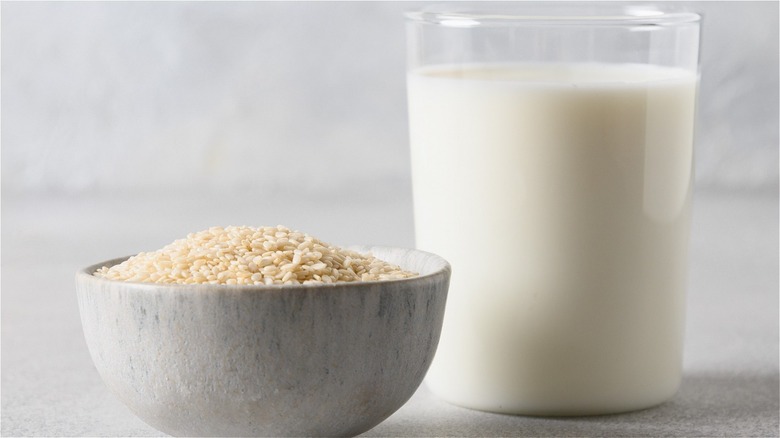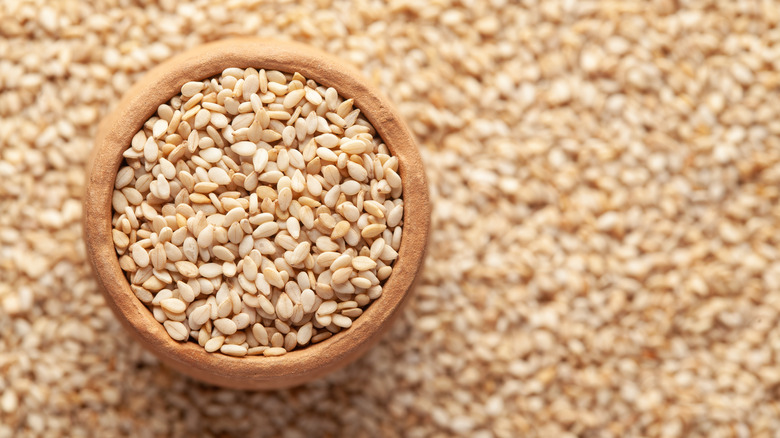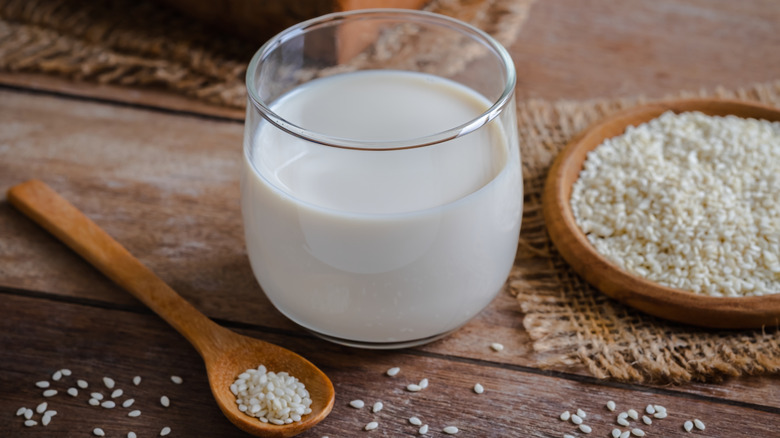What Make Sesame Milk Unique
Nowadays, it seems like with every trip to the grocery store, there's a new plant-based milk alternative on the shelves. While plant milks may seem like a new trend, they have actually been around for quite some time. Soy milk is oftentimes considered the pioneer of plant milks and has supposedly existed since 1365, if not earlier, according to Viva!. Interestingly, almond milk has existed since around the same time; however, soy milk was the first alternative milk to be produced on a large scale, with the first soy milk production facility opening in 1910.
Surprisingly, almond milk has become more popular than soy milk, with the country's almond milk brands generating a $5.4 billion market value, far more than other categories, in 2019. Other dairy milk alternatives come from rice, coconut, pistachio, hemp, walnut, and many more, per the National Library of Medicine, and anyone who frequents coffee shops knows that oat milk has been super popular in the 2020s. Now, oat milk may have to make way for yet another plant-based milk on the scene: sesame milk, which boasts some interesting characteristics that some say may make it the new "it" alt-milk.
Sesame milk may be the most sustainable plant-based milk on the market
People have been growing sesame plants for around 4,000 years, and the plant does extremely well in hot, dry environments with sandy soil, according to the USDA Natural Resources Conservation Service. Sesame plants are very resilient, don't require the use of pesticides, and can even spread their roots deep into the soil to find nutrients if necessary. Because sesame plants don't need much water to survive, making sesame milk requires significantly less water than dairy milk and other alternatives, making it a more sustainable option, per Hope and Sesame.
For example, one liter of sesame milk only requires 12 liters of water to produce. In comparison, one liter of soy milk takes 28 liters of water, one liter of oat milk takes 48, almond milk takes 371, and cow's milk takes a whopping 628 liters of water to produce. Furthermore, sesame plants don't need to be pollinated by bees like almond plants do, saving tons of bees from stress and death. In fact, around 30% of bees used in the production of almond milk die each year due to diseases and other factors, reports The Guardian.
Sesame milk is similar in nutrition to dairy milk but contains less sugar
Sesame milk is perhaps the closet plant-based option to dairy milk in terms of nutrition. One eight-ounce serving of unsweetened sesame milk has 90 calories, 8 grams of protein, 0 grams of sugar, 30% of the recommended daily value (RDV) for calcium, and 25% of the RDV for vitamin D, according to Hope and Sesame. Compare that to an eight-ounce serving of dairy cow's skim milk, which has 83 calories, 8.3 grams of protein, 12 grams of sugar, 23% RDV for calcium, and 26% RDV for vitamin D. While the dairy skim milk has less calories and more protein, it also has way more sugar and even less calcium.
Compared to other plant-based milks, sesame milk is still a more nutritious option, containing more protein and less sugar than both almond milk and oat milk. Sesame seeds are also a great source of B vitamins and fiber, contain lots of antioxidants, and may help with high blood pressure, high cholesterol, and inflammation, according to Healthline. As for the flavor of sesame milk, a reporter from The Washington Post said Hope and Sesame's original flavor had "a detectable sesame flavor," while The Beet called its barista blend "rich, full-bodied, and just sweet enough that you won't be tempted to add a sweetener to your coffee."


